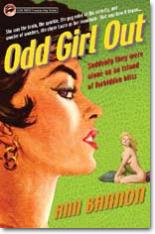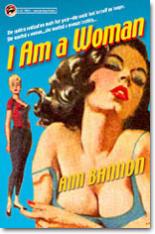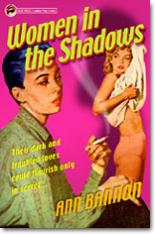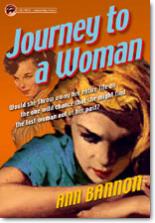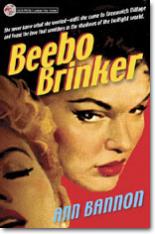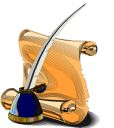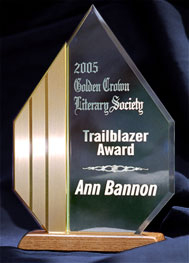
Ann Bannon
Woman of Distinction
and
Trailblazer
Extraordinaire
|
Ann Bannon and Lori L. Lake, 2006, Atlanta |
Ann Bannon has been called the "Queen of Lesbian Pulp" for writing
the very first series of lesbian novels. Beginning with
Odd Girl Out in 1957, Ann wrote "true" characters,
women who seemed real in their struggle with shame, longing, and isolation
as they discovered and dealt with their lesbianism. The
picture wasn't always pretty as evidenced by the doubt, confusion, domestic
abuse, and bad choices that the main characters, Beth, Laura, and Beebo,
often made.
These days, lesbians in the new millenium are sometimes appalled by the circumstances confronted by these 1950s/1960s characters. Many lesbians find the novels bleak or unhappy. But this was fifty years ago when homosexuality was still classified as a mental illness, and lesbians could be arrested or institutionalized merely for loving another woman. In light of the level of hostility and censorship (and even criminal prosecution) back then, the fact that any of Ann Bannon's characters found a modicum of peace and happiness was nearly a miracle.
When Gold Medal Books published Ann's first novel in 1957, nobody had any clue that these well-written books would stand the test of time. They were meant to be throwaway pulp fiction, something to titillate male and female readers, and then be tossed. But all across America, lesbians in small towns -- isolated women trapped in loveless marriages or in lonely spinsterhood -- found these books, and for the first time in their lives, their circumstances were affirmed. There were women like themselves. Their feelings were not insane or socially perverted after all. Bannon's books created a flicker of hope, a brief light in the wilderness.
But it wasn't until the 1970s that lesbian literature found a voice. Naiad Press opened, and an entirely new tradition of lesbian literature gradually came into being. Naiad reprinted Bannon's five lesbian books in 1983, and, after being out of print for a number of years, Cleis Press reprinted them between 2001-2003.
Now retired, Ann Bannon has quietly gone about the world talking about lesbian fiction and lesbian lives both then and now. In 2005, she was the recipient of the first annual Trailblazer Award from The Golden Crown Literary Society (GCLS), and she attended the 2006 GCLS convention in Atlanta and gave a riveting keynote speech. I had the honor of spending time with Ann and getting to know her. Though I have found her books to be inspiring and critical to the historically understanding of those "Happy Days," it's the woman herself who amazes the most. She's blessed with boundless energy, a keen, insightful mind, and a fascination for women and the world. She's a national treasure.
A hundred years from now, Ann Bannon will continue to be heralded as the Trailblazer that she is. Long may she - and her work - live!
